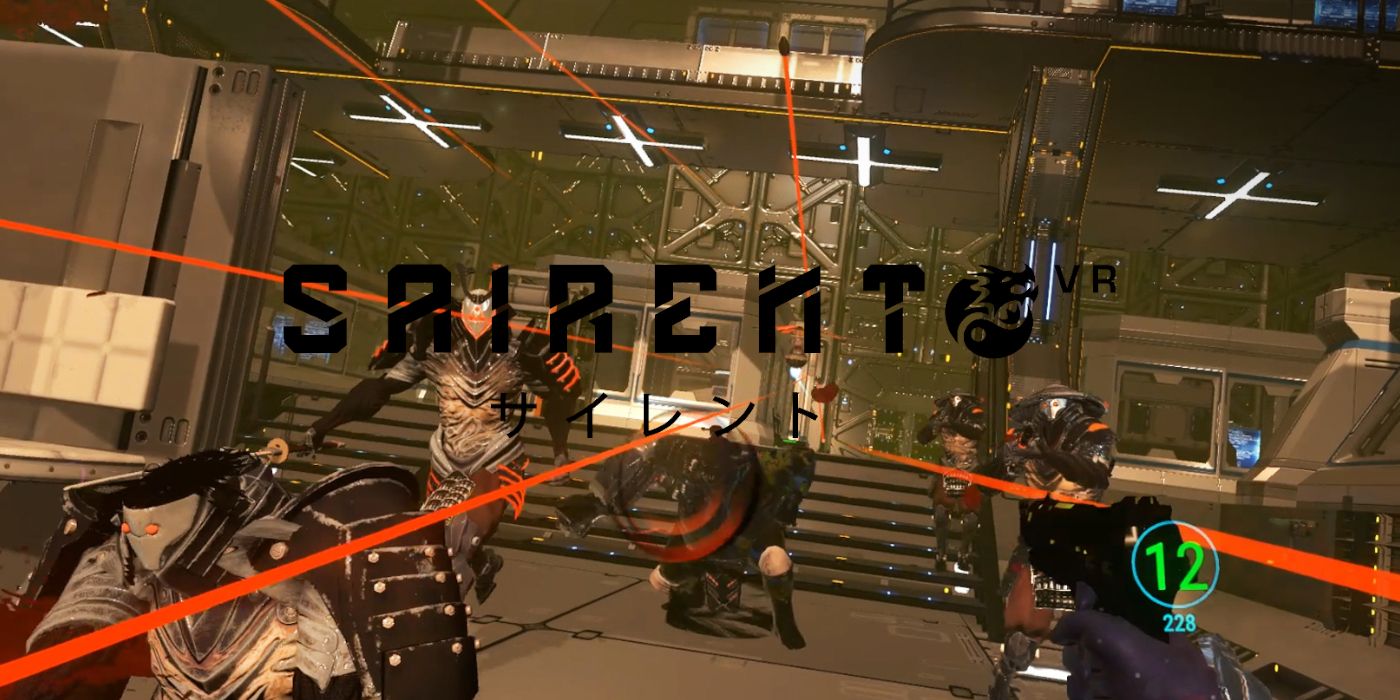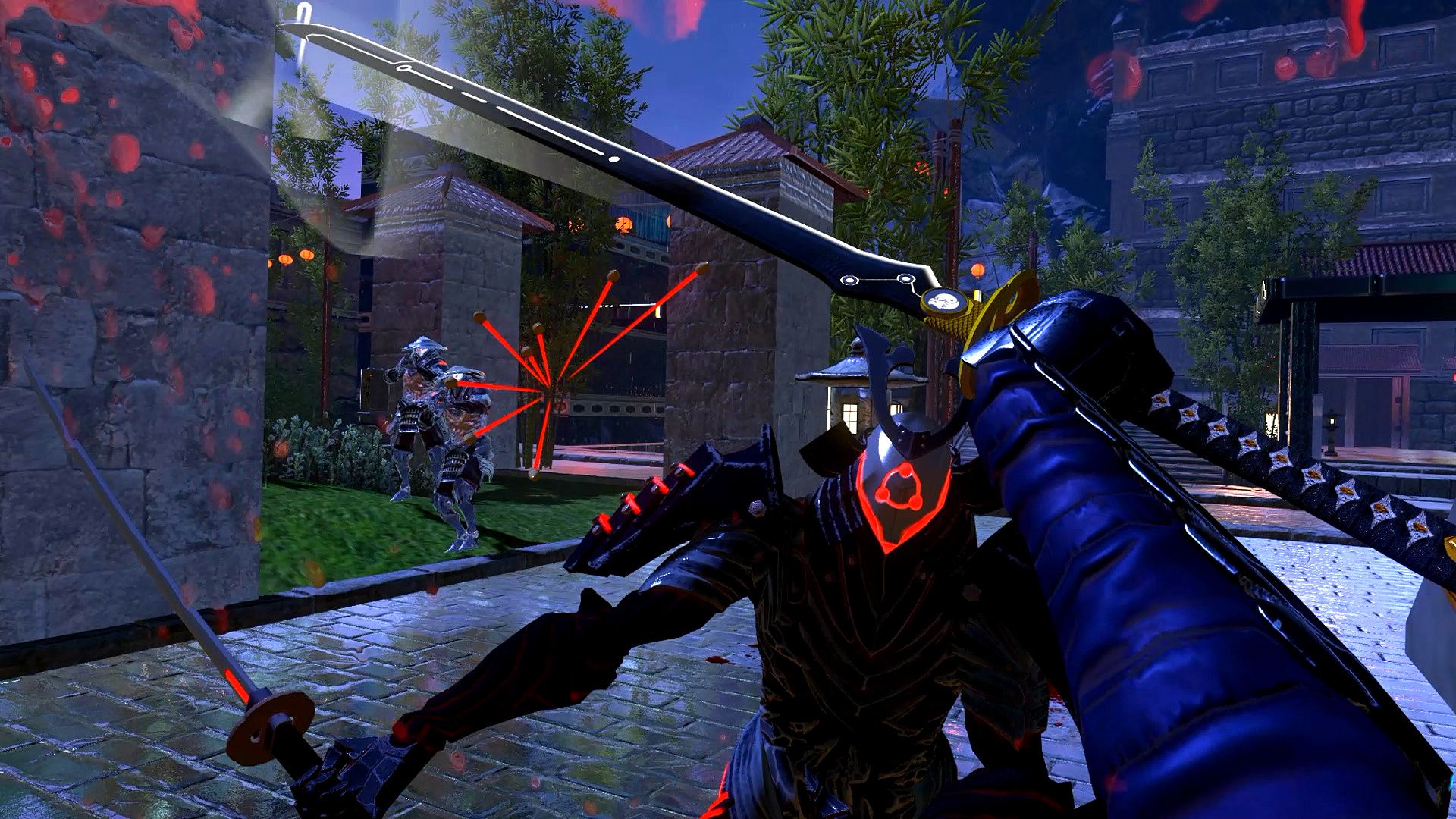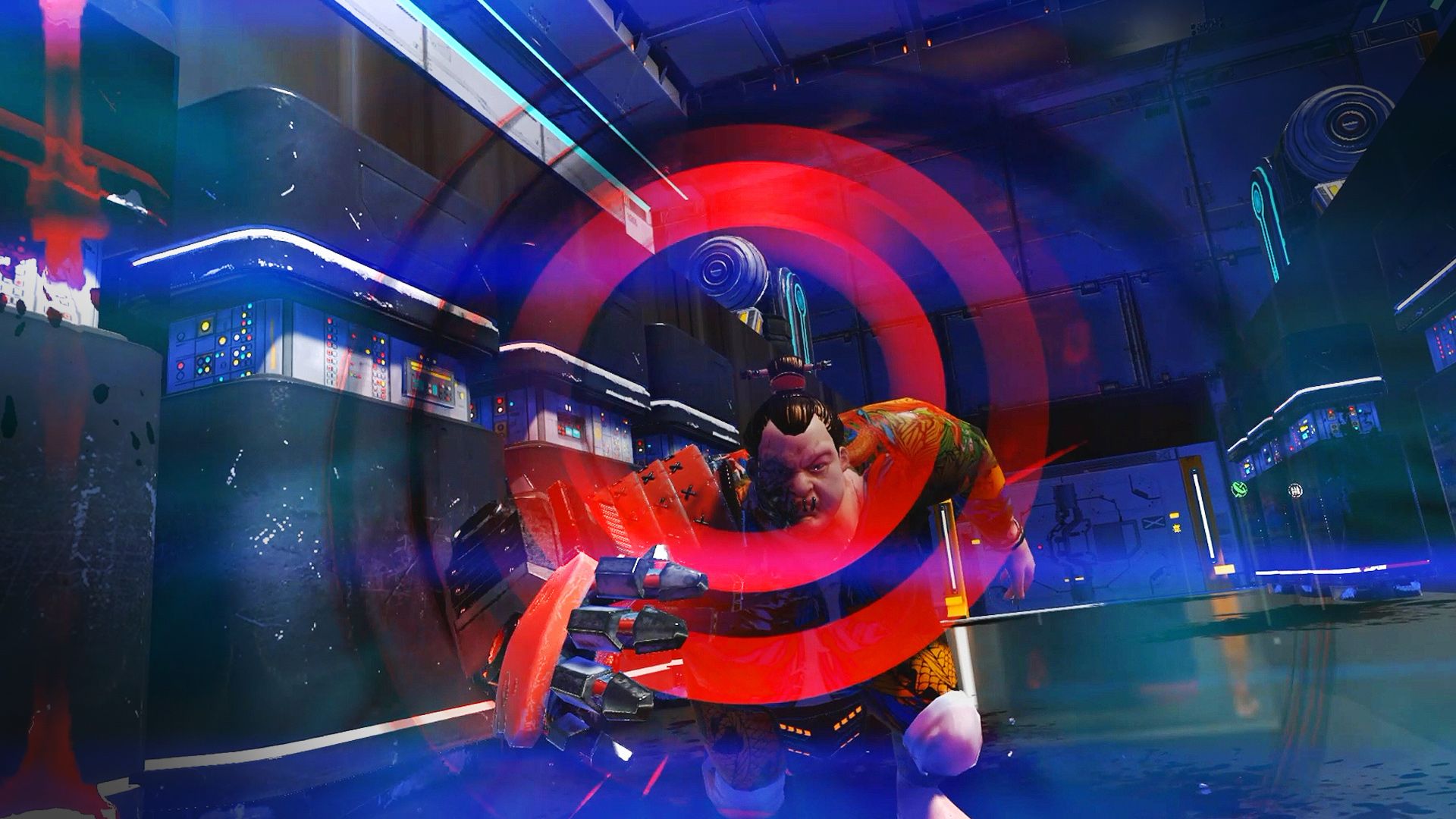A phenomenal new port of a 2018 gem, Sairento VR is a brilliant PlayStation VR action FPS featuring a dazzling amount of customization and content.
Laser swords, uzis, wall-running decapitations... Sairento VR has such a gratuitous approach to its furious action gameplay that it first feels like some kind of adolescent fever dream. Combined with the lower-resolution available on the PlayStation 4 (it originally released for desktop VR platforms a full year and a half ago) and some considerably elaborate controls, players might be tempted to doubt its merit in the first hour. Push past that hour, though, and you’re treated to a remarkable FPS/platformer hybrid, bundled within a surprisingly decent sci-fi yarn and an impressive armory to tinker with.
Cheiko is a Sairento assassin, dealing with layers of betrayal and hordes of enemies in a futuristic Tokyo. You might expect Sairento VR’s script to jump into full-on snark considering all the tropes it’s happy to juggle, but it chooses to deliver it’s plot machinations with a sense of self-seriousness that actually works out in its favor. This doesn’t mean the story is top-notch, but it’s confident and detailed and well-acted, and grants the action some stakes.
Ultimately, this is a game that probably recreates the classic lobby fight from The Matrix in its most startling 1:1 virtual representation yet. Cheiko has two holsters on her legs and two scabbards on her back, and swapping between dual weapons is as simple as shoving your hands into actual space and pressing a button on the relevant Move controller. Both the shooting and swordplay function in a way that’s satisfying and immediate, and it’s noteworthy how Sairento VR doesn’t seem to prompt as much drift and jankiness as you might expect or experience in other similar games on the platform.
It’s also much, much faster than those other games. Players can jump, wall-ride, double-jump, dash, and perform 180 degree turns right from the start of the game, and will need to master each and every method to control a skirmish. There are some initial obstacles to feeling like an effective warrior — for instance, the game’s tutorial never really demonstrates how easy it is to dash headlong into a wall and get disoriented, or that line-of-sight and your unseen virtual body greatly hampers jump trajectory — but after an hour or more you’ll start to discover a true feeling of (very violent) zen. Other VR action games tend to prioritize aim, precise firing, and cover management, where Sairento VR’s true strength is in its creative mobility acrobatics.
Aside from this learning curve, the game has an unusual initial phase whenever it’s loaded, where players are unceremoniously tossed into a dojo space with a large interactive screen. This functions as Sairento VR’s basic hub, which offers the main campaign, challenge modes, and even multiplayer engagements. The problem is, there’s absolutely no tutorial to offer new players stable footing — you’re merely tossed into the room and expected to decide on where and how to start playing. It’s oddly jarring, and it wouldn’t be surprising to hear that a player jumped right into multiplayer without even understanding what they were doing or how to play, and the game could definitely stand with an optional hand-holding tour mode to guide newbs into the campaign, which will eventually prompt the basic tutorial itself; it’s doubly frustrating that you can also select the tutorial directly from the start, but then still be forced to play through it in the campaign as well.
This UI/UX issue stacks on top of the difficulty of learning proper movement in the game, but those primary complaints completely melt once things get moving. Enemies in Sairento VR can be lethal depending on the chosen difficulty mode, though even normal difficulty will provide a noticeable challenge. Most stages amount to monster closets and wave combat, dealing with multiple cyber-Japanese enemies firing projectiles or jumping directly into your face with menacing swords. Absent in the tutorial is a description of how to block and deflect attacks, but it speaks to the game’s excellent design that most players will learn these mechanics just through reflexively moving their controllers.
The action is intense — for some, it might come off as a little too intense, really — but the way to best manage these fights is by taking to the air. Combined with a recharging slow-mo ability, you’ll soon be leaping to walls or catwalks above, running alongside them, blasting an enemy below with a headshot, then grabbing a sword out of its sheathe to behead another enemy during a landing slide. The first dozen times you pull off something like this it feels almost accidental and definitely clumsy, but all these control inputs and flailing arm movements turn into deliberate demonstrations of skill in due time.
Those central mechanics are rock-solid, but they’re not Sairento VR’s only highlight. For one thing, it’s quite possible that the customization options for control and gameplay experience offered here are the smartest and most elaborate list of settings ever found in a VR game. That might sound like damning with faint praise, but when nearly every PS VR release offers a scarcity of ways to adjust how the high-tech helmet weighing you down works in tandem with the game, it’s worthy of special mention. Players can customize how reloads work, whether to prioritize jumps over dashes, and how every one of the game’s mobility skills function, as well as dozens of other toggles and quality-of-life improvements, all of which let you refine the exact type of experience you’re looking to get out of this. It’s genuinely outstanding, and players who stumble with Sairento VR at first will want to dig deep into those settings — you’ll be surprised by the possible improvement.
That customization philosophy extends to the armory metagame as well. Throughout the course of the game, players will pick up currency, equippable shards, and crafting shrapnel, all of which can be selected and interacted with in the dojo in between levels. There are experience points and level-ups which enable different crafting avenues and treasures, and all of it is based in an extensive loot-drop system that feels very much like a free-to-play market concept, though there doesn’t seem to be any type of P2W, freemium money-grubbing intention in sight. All of these features add to Sairento VR’s richness of content, and the opportunity to equip constantly upgrading gear and weapons adds on an unexpected and addictive RPG quality.
There’s a solid atmospheric soundtrack to round out its effective voice acting, and the only real demerit to the game is one to be expected: the graphics. As with many PS VR games, the texture quality is noticeably muddy, and the aliasing might honestly be some of the worst you’ll encounter on the platform. Once things start moving, most any player will end up ignoring the overall low-res quality of the visuals; this is another thing to chalk up to that first-hour feeling of growing pains.
Sairento VR is a superb product that will satisfy any PS VR owner looking for something meatier and more thoughtful than the seemingly endless glut of carnival games and rail shooters on offer, and may even spark up a comparable workout to Beat Saber. It’s a premium-priced game that has an admirably responsible approach to offering content to its customers, with dozens of hours of gameplay and a focus on meaningful customization throughout. Or, to put it more simply: Sairento VR is the Matrix simulator you’ve been looking for since 1999.
Sairento VR is out now on PlayStation VR for $39.99 physical / $37.99 digital. A digital copy was provided to Screen Rant, for purposes of review.





